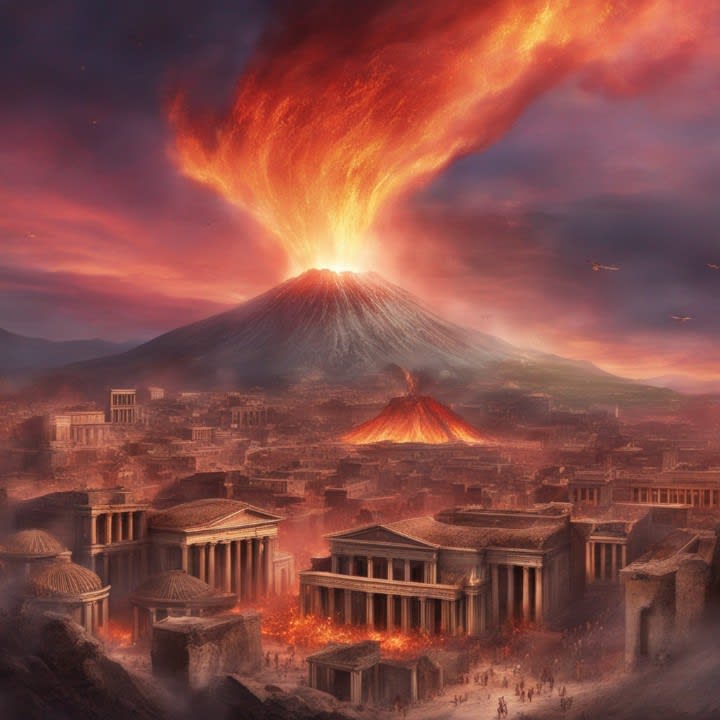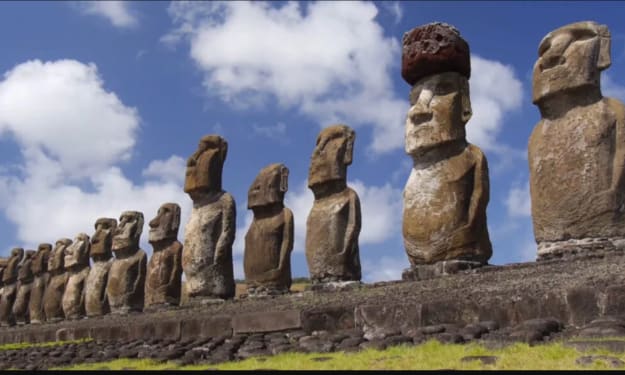How did the eruption of Pompeii change the course of history?
Join us as we explore the ancient ruins of Pompeii and witness the tragic aftermath of the volcanic eruption that buried the city in ashes. Learn how this natural catastrophe preserved the history and culture of Pompeii and see the eerie stone statues of its victims! 🌋🥵❕

Reliving Pompeii's Final Day: The Eruption of Mount Vesuvius in 79 AD
The catastrophic eruption of Mount Vesuvius on August 24, 79 AD buried the prosperous Roman city of Pompeii under volcanic ash and pumice. By recreating the tragedy through rich historical storytelling, we illuminate both the ruin wrought by nature's fury and the remarkable Roman culture lost beneath the ash.

The Thriving City of Pompeii Before the Eruption
On its last day, Pompeii teemed with life. The city of around 11,000 people stood as one of the Roman Empire's most vibrant communities.
Wealthy aristocrats, ambitious traders, slaves, gladiators, refugees - all walked the city's streets and prepared for the day's events blissfully unaware of the coming catastrophe.
Young lovers like Decimus and Livia strolled through lavish villas as the elderly Cornelia tended her garden. Rambunctious men like Cornelius indulged in gambling, drinking and brothels. Gladiators trained at the arena, preparing for the next spectacle.
"Hot women and warm blood, that’s what Cornelius lived for, like many of the young men of Pompeii," wrote one historian.
The city contained wonders including an extravagant 20,000 seat amphi theater hosting events from plays to mock naval battles. Erotic bathhouses and brothels thrived serving every desire. Vibrant markets and eateries lined thoroughfares buzzing with Roman life in the heart of the Republic.
But at around noon, unease spread as light tremors shook the ground. Oddly, they emanated from nearby Mount Vesuvius - an dormant volcano thought extinguished. Throughout the day, smoke rose ominously from its crest as Pompeii's fate hung in the balance.
Mount Vesuvius Awakens
As Vesuvius rumbled, across the Bay of Naples the renowned Roman commander and scholar Pliny the Elder took note from his home in Misenum. As a natural philosopher, he was intrigued yet wary of the volcano's awakening.
Pliny readied ships to investigate, inviting along his nephew Pliny the Younger. But the scholarly youth declined, underestimating the danger. This decision saved his life.
"Pliny the Elder, an expert in all matters concerning nature, knows this is abnormal," said one account.
In Pompeii, unease spread as ash and small rocks began falling around midday. The pumice stones soon intensified, measuring 250-280°F (120-140°C) - hot enough to burn roofs. Fear mounting, many huddled anxiously indoors as ash accumulated outside.
Some citizens recognized the danger and fled early. But most delayed, unwilling to abandon their city and possessions. Their inaction trapped them when the true fury of Vesuvius was unleashed.

The Volcano's Deadly Pyroclastic Surges
By late afternoon, Pliny the Elder sailed with his fleet on a desperate rescue mission as conditions in Pompeii deteriorated. But escape was now impossible.
Enormous pyroclastic surges - superheated avalanches of gas, ash and rock - roared down Vesuvius at 100 miles per hour, reaching temperatures of 360-430°F (180-220°C). Their thermal energy equaled 100,000 atomic bombs.
"The flow passes through Pompeii, moving further afield, killing everything as it passes," described one ancient account. "Gas and rock of about 572° F (300° C) flow into the city, devouring everything it comes into contact with."
Even those sheltered indoors were instantly incinerated by the 1,000+ degree heat. Clouds of suffocating gas and ash smothered the doomed citizens of Pompeii.
In the chaos, falling volcanic debris crushed buildings and entombed victims. Showers of rocks pummeled fleeing crowds as the sun disappeared in a shroud of smoke and ash. The sea itself receded as if fleeing the cataclysm.
Pliny the Elder - A Hero's Death
Rather than escape, Pliny the Elder sailed directly into peril, desperate to rescue terrified citizens choking on ash along the shoreline. But soon volcanic gases overwhelmed the scholar and his crew in the town of Stabiae.
"The gases have now encompassed Pliny and the rest of his men still in Stabiae," wrote Pliny the Younger. "Pliny tries to get up, but he coughs and chokes, his slaves supporting his vast weight as he collapses."
The admiral perished a hero - sacrificing himself in a vain attempt to save lives amid the firestorm. His death, and Pompeii's destruction, were described as earth-shattering calamities by the few survivors.

The Ruin of Pompeii and Legacy of the Eruption
The eruption of Vesuvius claimed over 2,000 lives across the Bay of Naples. Ash buried Pompeii under up to 20 feet of debris. Six more pyroclastic surges over the next day obliterated any final shreds of life.
The thriving city was entombed and forgotten for nearly 17 centuries before its rediscovery. Excavations eventually revealed Pompeii's dwellings, markets, baths, theaters and amphitheaters frozen exactly as they were in 79 AD.
These ruins provide an unparalleled glimpse into Roman life at its peak, just before the volcano catastrophically preserved the city for posterity. Archeologists also uncovered thousands of victims buried in ash, as well as haunting plaster casts of citizens killed by extreme heat.
Along with the destruction, the eruption also created a rich volcanic soil that allowed the area to thrive again. But the disaster remains one of history's deadliest, killing thousands and altering the course of civilizations.
By reanimating Pompeii's final hours, we memorialize those lost while rediscovering the spirit of a city buried for centuries. And we're reminded that even empires can crumble overnight when nature unleashes her awesome and unrelenting power.
📝 SOURCES
- https://pastebin.com/Hz3upnYY
- Disclaimer: Images apart from the title image were generated with Bing AI, we always want to entrust our readers are not deceived.






Comments
There are no comments for this story
Be the first to respond and start the conversation.